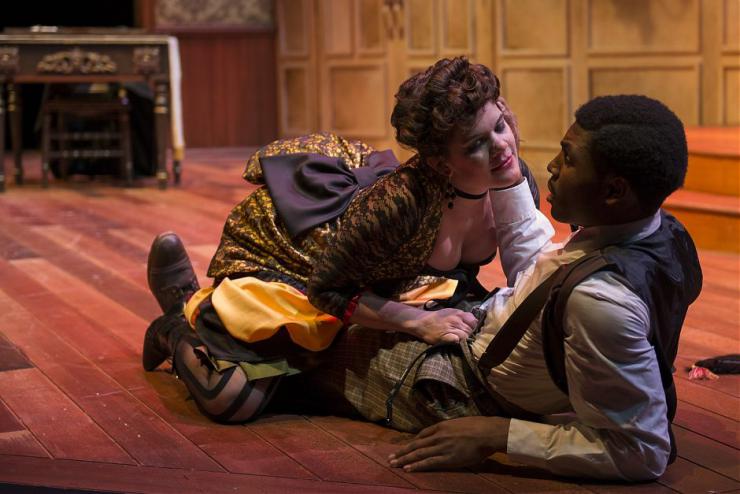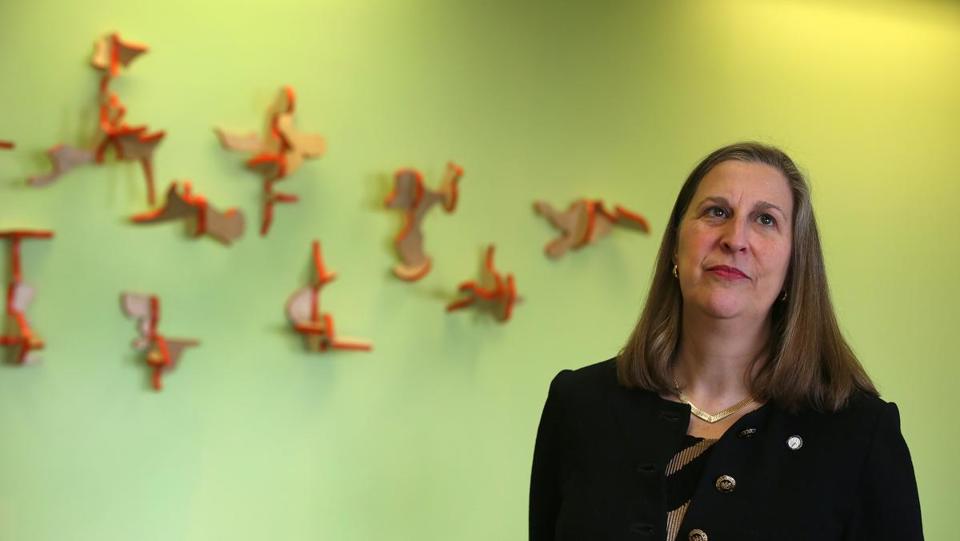Link Roundup! – 12/4/15
Link Roundups feature articles and bits of internet goodness that our dramaturgy team digs up. If you find something you want to send our way, drop us a line on Facebook or Twitter!
♦♦♦♦♦
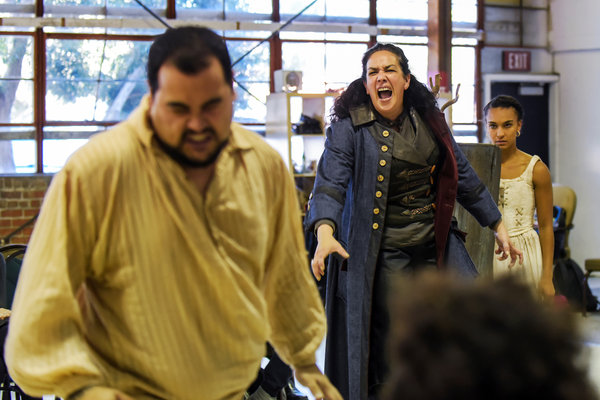
From left, John R. Lewis, Catherine Castellanos and Tristan Cunningham during a rehearsal of California Shakespeare Theater’s production of “The Tempest.” Credit Alessandra Mello
The New York Times ran a feature on Ten Thousand Things and their radical approach to programming theatre for people on the margins of society:
“When you say you do theater for people in prisons and homeless shelters,” Ms. Hensley conceded, “people’s first reaction is: ‘That must be really awful theater. It must be skits about staying off drugs.’” It took a while, she said, to convince mainstream audiences, critics and funders that the experiences of those nontraditional audiences “mirror the extremes of the characters in the way that most upper-class audiences just don’t.”
Born in Iowa and educated at Princeton and U.C.L.A., Ms. Hensley, 57, quickly grew disillusioned with the idea of climbing the regional theater ladder. Living in Los Angeles in the 1980s, she observed the chasm between haves and have-nots and concluded that there was an audience hungry for high-quality theater that respected their humanity.
♦♦♦♦♦
The Art Works blog has a post about the National Academies of Sciences, Engineering, and Medicine’s exploration of how integrating the arts can benefit STEM fields:
Many examples exist (some were shared at the workshop) of scientific and technological endeavors that have benefited from artistic practice or pedagogy. “Design thinking” leaps to mind, but so do arts integration with medical training, or artists who help scientists visualize their data, especially to communicate a public health message. Indeed, scientists at the workshop—and at similar events I’ve attended in the past year—readily acknowledge that the infusion of the arts and humanities could awaken in scientists and engineers a capacity for emotional connections, creativity, and complex problem-solving that might lie dormant without such exposure.
My question: if we strive for full integration, then what new “habits of mind” (as one workshop participant called it today) should be cultivated by STEM-related training for arts/humanities students? Or is the relationship not in fact bi-directional?
Link Roundup! – 11/20/15
Link Roundups feature articles and bits of internet goodness that our dramaturgy team digs up. If you find something you want to send our way, drop us a line on Facebook or Twitter!
♦♦♦♦♦
In HowlRound, Lavina Jadhwani examines what it means to be a color conscious director:
Since I first wrote about color-conscious casting, I’ve learned—by directing my own productions as well as casting plays that I did not direct—that color-conscious casting doesn’t guarantee a color-conscious production. Diverse casting is a cause; a more challenging and/or inclusive conversation is not inherently an effect.
♦♦♦♦♦
Boston Magazine continues the coverage of Boston’s arts space issues, with a particularly pointed look at Mayor Walsh’s participation in finding solutions:
Compare Walsh’s response with what happened in 2003, when the city faced another crisis in the Theater District. Back then, the Wang Center for the Performing Arts—now the Citi Performing Arts Center, the same one Citi is pulling out of—summarily booted the Boston Ballet’s beloved production of The Nutcracker to make room for a carpetbagging production of New York’s Rockettes in the Radio City Christmas Spectacular. The next morning, Mayor Thomas Menino was on the phone trying to secure the Hynes Convention Center as a new home for the ballet. (Thankfully, that never happened—right sentiment, absolutely wrong venue.) Menino worked behind the scenes for months to seal a deal for the ballet, which leased the newly restored Boston Opera House at affordable rates and eventually took its toe shoes and tutus there for its entire season.
Link Roundup! – 11/13/15
Link Roundups feature articles and bits of internet goodness that our dramaturgy team digs up. If you find something you want to send our way, drop us a line on Facebook or Twitter!
♦♦♦♦♦
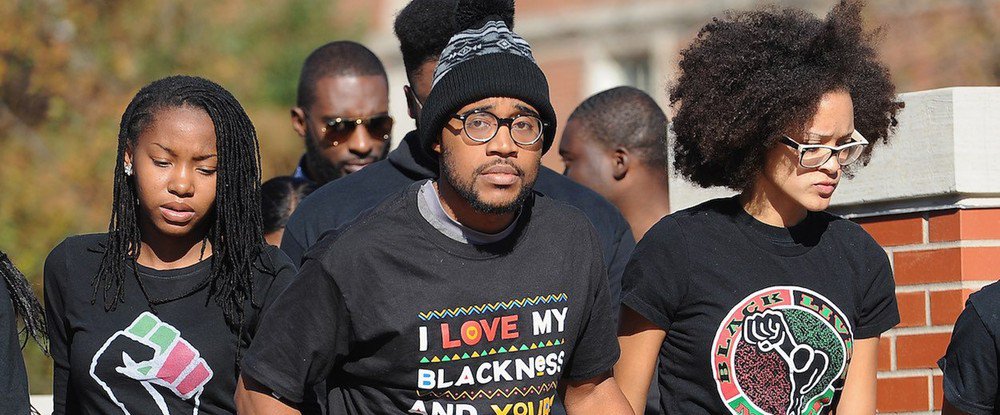 Roxane Gay’s post in The New Republic does a good job detailing the recent student activism at Mizzou and Yale, as well as detailing the larger cultural forces behind the protests:
Roxane Gay’s post in The New Republic does a good job detailing the recent student activism at Mizzou and Yale, as well as detailing the larger cultural forces behind the protests:
There is often condescension in examinations of these supposedly fragile young people who don’t understand the real world. College students do, however, understand the real world, because they aren’t just students: They do not abandon their class background or sexuality or race or ethnicity when they matriculate, and their issues do not vanish when they register for courses. We should not dismiss their valid concerns. To do so, to invalidate their experiences, would be to invalidate their diversity and ignore their hurt. American colleges and universities have always been incubators for the privileged, and the only people who continue to operate there with some guarantee of physical and emotional safety are white, heterosexual men. Is it any wonder, then, that students are demanding a basic guarantee of safety?
♦♦♦♦♦
WGBH Open Studio will be airing an episode tonight specifically about the recent changes in the Boston theatre landscape related to lack of space and resources. You can check out a preview HERE, and tune in at 8:30pm to catch the rest.
#StaffChat: Diverse Hiring Practices
#StaffChat posts feature issues, articles, and news that the C1 team discusses as part of our weekly all-staff meeting. We’d love to hear your thoughts too — hit us up on Facebook or Twitter!
♦♦♦♦♦
This week we are exploring ways to make our company more inclusive and how to ensure we create a staff that is diverse and representative of our city. Here are a few articles we’ll be using to prompt our conversations:
- — Thoughts on Diversity Part 2. Why Diversity is Difficult. via Medium
- — Has ‘Diversity’ Lost Its Meaning? via New York Times Magazine
- — You Want A Diverse Theatre? Prove it. via HowlRound
The first article from Medium, written by former Twitter Engineering Manager Leslie Miley, is an interesting case study. Although his essay gives insight into workplace diversity issues in the tech world and not in an arts context, a lot of the problems at Twitter are present in workplaces of all kinds. In the piece, Miley details some of the problematic approaches to diversity he witnessed at Twitter:
Personally, a particularly low moment was having my question about what specific steps Twitter engineering was taking to increase diversity answered by the Sr. VP of Eng at the quarterly Engineering Leadership meeting. When he responded with “diversity is important, but we can’t lower the bar.” I then realized I was the only African-American in Eng leadership.
…
Why wouldn’t there be a concerted effort to invite the few African American employees to these events? Is it because, as one colleague told me, “they forgot that you were black?” Is a prerequisite to working in tech as a minority that one is expected to, in the eyes of the majority, sublimate your racial identity to ensure a cultural fit? In attempting to achieve the appropriate level of blackness that makes me palatable to tech, had I unwittingly erased the importance of maintaining my blackness in a sea of white faces?
Link Roundup – 11/6/15
Link Roundups feature articles and bits of internet goodness that our dramaturgy team digs up. If you find something you want to send our way, drop us a line on Facebook or Twitter!
♦♦♦♦♦
The Guardian has an article asking organizations to consider how they impact the local communities that don’t necessarily see their work:
Every theatregoer has an example of a play that changed their life to a greater or lesser extent. However, the real question I reckon theatres need to ask themselves is not whether what they do impacts on those who go to their shows but whether what goes on in their building really has a significant impact for those who have never stepped inside it? This is not about an individual’s response and relationship to a particular show in a particular building, but about a play and a venue’s relationship to the community at large.
♦♦♦♦♦
The LA Times has a story summing up the recent stats surrounding theatre donors and attendance:
Theaters are making adjustments by trying new approaches, she said, including more emphasis on shows geared toward children and parents.
The report said that productions for young audiences were “a bright spot” in which attendance grew 12.9% between 2010 and 2014. But childrens’ series accounted for just 3% of total attendance at the 118 theaters surveyed over the five years.
“More theaters would benefit from producing high-quality programming for multigenerational audiences,” Eyring said. “Not only because the numbers tend to be on the rise, but it’s a way of engaging the next generation of theatergoers.”
#StaffChat: The Jubilee
#StaffChat posts feature issues, articles, and news that the C1 team discusses as part of our weekly all-staff meeting. We’d love to hear your thoughts too — hit us up on Facebook or Twitter!
♦♦♦♦♦
This week our staff is examining The Jubilee — an initiative inviting theatres across the country to commit to producing only plays written by women, people of color, LGBTQA individuals, and writers with disabilities during the 2020–21 season.
Here are a few of the articles we’re talking about this week:
- — Welcome to the Jubilee on HowlRound
- — How To Diversify U.S. Stages in One Fell Swoop: The Jubilee Has a Radical Plan in American Theatre
- — You Don’t Have to be an Ally, but Don’t be an Enemy: A Response to the Jubilee Responses on HowlRound
In the first HowlRound post, the committee of The Jubilee lays out their vision for the future of American theatre, along with quotes from some of the artists that are involved in the initiative. Aditi Kapil, the Playwright-In-Residence at Mixed Blood Theatre and a former C1 playwright, thinks about the intention of the project like this:
It’s like we’ve all been hanging out at this party and one guy keeps talking and talking, and now it’s 2020 (8:20 p.m. in this metaphor) and we decide that, just for a minute, everyone else is going to say stuff, respond, talk to each other, change the subject, whatever. And that goes on for a minute. And then it’s 2021. How might the conversation have shifted or evolved? And what happens now that we’re all talking? Because that’s generally when the party gets good, right? That’s what I wonder about. A lot.
The companies that have already taken the Jubilee pledge are listed on HowlRound, but the invitation is still open to anyone who wants to join. Participants are invited to a weekly conference call to talk about how the project is going, but it’s worth noting that no one will be monitoring the companies that sign on or making sure each season fits the project’s goals — Jamie Gahlon explains this idea further in American Theatre:
“Right now, the role of the Jubilee committee is really to help amplify the fact that that institution has made the pledge,” says Jamie Gahlon, senior creative producer of HowlRound and Jubilee committee member. The 39 theatres who have signed on so far “are joining this huge national block party that we are having, more or less,” says Gahlon. “I think the responsibility for following through on the pledge and figuring out specifically what it means to that theatre or that community really falls on the person who has signed on. I don’t think anyone on this committee wants to be policing any of that, we don’t feel like that is our role.”
This announcement has stirred up quite a bit of conversation online, with lots of questions being raised, as well as a fair amount of negative response from people who feel the initiative is exclusionary. In response to criticism Catherine Castellani posted a follow up on HowlRound:
I’ve read responses to Jubilee that actually state that systemic sexism/racism is OK because no one flat out comes out and says No “You People” Allowed. You’re free to say it; that’s your right. But the rest of America is not going away. You get to choose your response to change. You can attack your fellow artists, or you can do something else—something positive and worthwhile.
You don’t have to be an ally. But don’t be an enemy.
We’re going to spend some time talking about a few of the questions raised in response to Jubilee at the upcoming staff meeting. Here’s a few to get us started in advance:
- — If C1 were to take the Jubilee pledge, how would our 2020/2021 season look different from our usual seasons?
- — How would theatre in Boston be different if C1 joined Jubilee?
- — What artists would you want to see produced in a Jubilee year?
- — Jubilee specifically focus on the identity of playwrights — how do you think that does or does not change the conversation about equity in theatre?
Link Roundup! – 10/23/15
Link Roundups feature articles and bits of internet goodness that our dramaturgy team digs up. If you find something you want to send our way, drop us a line on Facebook or Twitter!
♦♦♦♦♦
The Boston Globe has another article about local theatre space, this one addressing the role of Julie Burros on the issue:
But the lack of a robust public response from City Hall to recent developments has raised eyebrows. Is Burros just a figurehead, and how committed is Walsh to the arts?
“This is an opportunity for him to show he is a champion of the arts,” said Matt Wilson, the executive director of MASSCreative, a statewide advocacy group that made arts an issue in the Boston mayoral race. “We hope he seizes it.”
What people keep referencing is what Walsh’s predecessor Tom Menino did. Over two decades, Menino used his bully pulpit to get private and public partners to restore aging theaters, including the Paramount, Modern, and Opera House, which helped jumpstart the revitalization of Downtown Crossing.
♦♦♦♦♦
This post from The Guardian asks what theatre spaces might be like if they operated more like town squares:
But there are significant differences between the civic function of the theatres of almost 60 years ago and that of theatres in the 21st century. The days when every town thought it should have a theatre as a matter of pride, and to demonstrate how cultured it is, are long gone. Often, increasingly cash-strapped local authorities see their theatres as a drain on resources rather than an asset, and, quite rightly, they don’t see that what people really want and need is yet another revival of Private Lives. So how can those in the arts create new or better relationships with local authorities and other local partners, to ensure that the arts stay on the agenda and remain part of the conversation about who we are and how we live together?
Link Roundup! – 10/17/15
Link Roundups feature articles and bits of internet goodness that our dramaturgy team digs up. If you find something you want to send our way, drop us a line on Facebook or Twitter!
♦♦♦♦♦
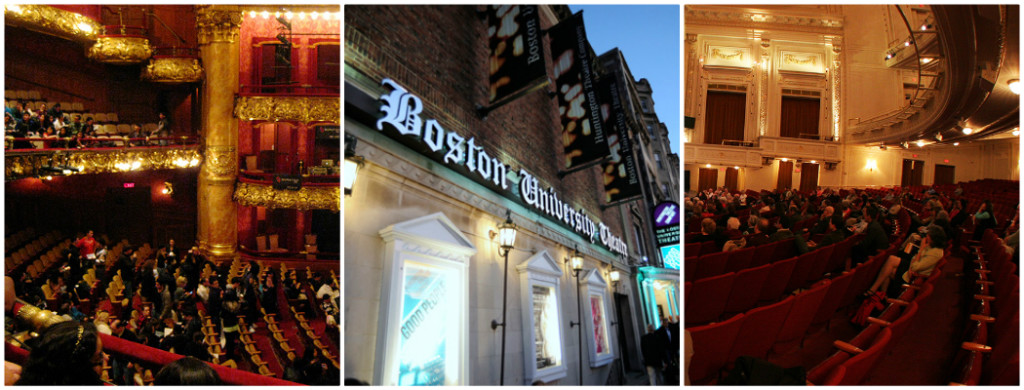
The Colonial Theatre, BU Theatre and the Shubert Theatre. (Blng/Flickr, BU Today, Citi Performing Arts Center)
The ARTery’s Ed Siegel has a good breakdown of the recent space shake-up in Boston:
Although every situation is different, Walsh needs to step into Menino’s shoes and make sure that the energy and commitment that Menino put in place is not diminished. This is more than a matter of helping large institutions. Without the Huntington’s stewardship of the Calderwood, the SpeakEasy Stage Company would not have grown from a small theater to such an important midsize one. Company One Theatre would probably not have grown from the fringe to one of the best theaters in Boston. As Jane Chu, chairman of the National Endowment for the Arts, the Boston Foundation’s Paul Grogan and the Barr Foundation’s James Canales have said, there is an ecology to an arts scene. And the health of large institutions is important to small ones as well.
♦♦♦♦♦
Playwright Annie Baker (THE FLICK, THE ALIENS) joined Mark Maron on his WTF podcast this week to talk about her writing process and the state of the American theatre. It’s a great listen — check it out!
Link Roundup! – 10/9/15
Link Roundups feature articles and bits of internet goodness that our dramaturgy team digs up. If you find something you want to send our way, drop us a line on Facebook or Twitter!
♦♦♦♦♦
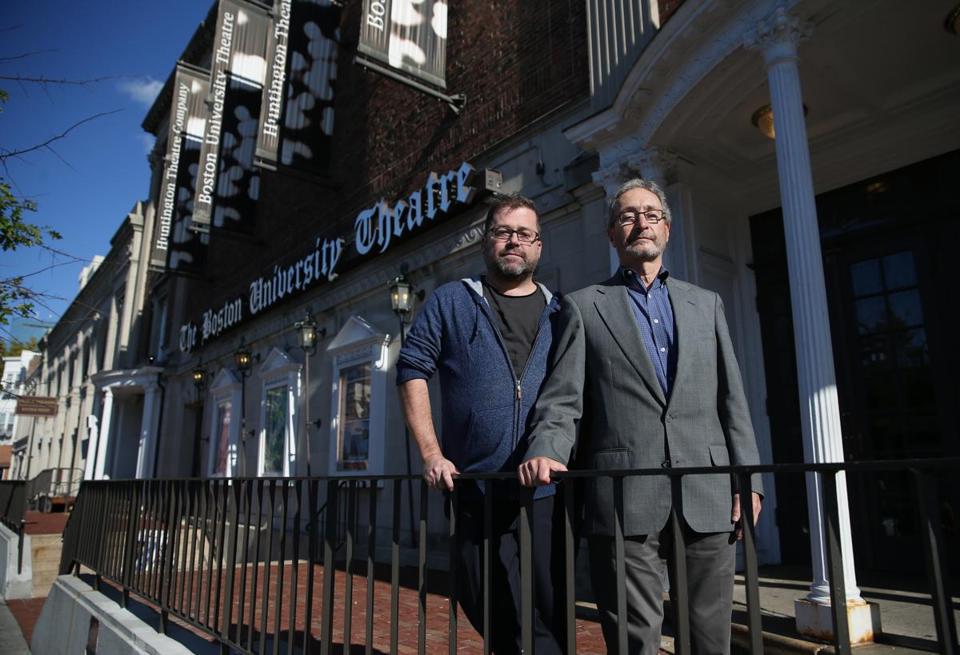
Huntington Theatre Company artistic director Peter DuBois, left, and managing director Michael Maso in front of the BU Theatre. Jonathan Wiggs/Globe Staff
The Boston Globe has a story about this week’s big news regarding the partnership between Boston University and the Huntington Theatre:
After 33 years, Boston University and the Huntington Theatre Company are parting ways, and the university is putting the BU Theatre up for sale, effective immediately. For the highly regarded Huntington, which just two years ago won a Tony Award for regional theater, the dissolution of the partnership with BU ushers in a period of uncertainty.
♦♦♦♦♦
Early career director Lucy Gram’s musings in HowlRound about life as an “emerging” artist are great:
Remember, as difficult as it is to make a life in the theatre, it is something I am lucky to be pursuing. What I am pursuing isn’t a career, or “success,” or a title. It’s an artistic practice. It’s a lens through which to look at life; a platform on which to ask questions about the world we know and create visions of worlds we have so far only imagined.
